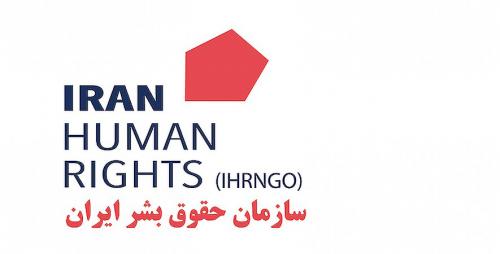05 April 2023 :
(April 4, 2023) - Report on 200 Days of Protest Repression/List of at Risk Protesters
(IHR, taking advantage of the fact that no executions are usually carried out during the month of Ramadam, had the time to compile an accurate 43-page file (here the English version: https://iranhr.net/media/files/APRIL_PDF_LIST.docx.pdf ) with an account after the first 200 days of the protests following the killing of Mahsa Amini in September. Cases of people at risk of hanging for being arrested during protests are also indicated and briefly described. HoC publishes an abbreviated version, referring to the original file for those who may want more information, including a rich photographic kit.)
In the 200 days since the start of the nationwide protests, at least 537 people have been killed by state forces according to Iran Human Rights records. The majority were killed in the first months of protests. The Islamic Republic has also executed four protesters after show trials and without due process, which were met with a strong backlash by the international community.
However, in the same time period, at least 309 people were executed across Iran which the international community has failed to react to. Of those, 180 were executed for drug-related charges.
Emphasising that the Islamic Republic uses the death penalty as a tool of intimidation, Iran Human Rights considers the significant rise in execution numbers during the nationwide protests to be in line with this.
Director, Mahmood Amiry-Moghaddam said: “International attention and backlash to the execution of protesters increased the political cost of these executions for the Islamic Republic but it wasn’t enough to stop its execution and killing machine. To intimidate and create societal fear, executions for non-political crimes were intensified. Now, the international community’s lack of reaction to the daily executions in Iran can lead to an unprecedented wave of executions of those charged with drug offences, the low-cost victims of the Islamic Republic’s execution machine.”
According to information obtained by Iran Human Rights, at least 537 people including 48 women and 68 children have been killed by security forces since the start of the nationwide protests 200 days ago.
The aforementioned numbers only relate to protests on the streets. The protesters executed and those that have died under suspicious circumstances (include alleged suicides) shortly after release, are not included in these statistics.
The time distribution of people killed in nationwide protests is: 223 victims in September (from 17 to 30), 100 in October, 173 in November and 25 in December. At least 16 others have been killed from January-March 2023. Some were those injured in previous months’ protests who succumbed to their injuries.
The execution trends during the protests are: 5 executions in September (from 17 to 30), 30 in October, 57 in November, 72 in December.
There was a spike in executions for non-political crimes in the weeks after the start of the nationwide protests. In the last three and half months of 2022, at least 164 people, including two protesters, were executed in Iran. This trend continued into 2023, with at least 145 people, including two protesters, executed in the first three months of the year.
Death Toll by Province
Protesters have been killed in 26 provinces (out of 31), with the most reported in Sistan and Baluchistan, Western Azerbaijan, Kurdistan, Tehran and Mazandaran respectively.
Deaths have been recorded in: Sistan and Baluchistan: 134 people; Tehran: 69 people; Kurdistan: 57 people; West Azerbaijan: 56 people; Mazandaran: 41 people; Alborz: 31 people; Gilan: 28 people; Kermanshah: 24 people; Isfahan: 19 people; Khuzestan: 17 people; Fars: 15 people; Khorasan-Razavi: 9 people; East Azerbaijan: 5 people; Qazvin: 5 people; Zanjan: 3 people; Lorestan: 3 people; Markazi: 3 people; Kohgiluyeh and Boyer Ahmad: 3 people; Hamedan: 2 people; Ardabil: 2 people; Ilam: 2 people; Bushehr: 2 people; Hormozgan: 2 people; Golestan: 2 people; Semnan: 1 person; North Khorasan: 1 person.
Crucial to note: Iran Human Rights started researching and recording protester deaths from the outset of protests. In the course of research and as new information is obtained, the data will be adjusted accordingly. As such, it is reflected in the change in province numbers. The number of protesters killed are an absolute minimum and do not include security forces.
PROTESTERS AT RISK OF EXECUTION, DEATH PENALTY CHARGES OR SENTENCES IN IRAN
This list includes both officially reported cases and those reported by family members and citizen journalists. Iran Human Rights has been unable to confirm the details of all individual cases and therefore requests that anyone with information about protesters at risk of death penalty charges or sentences contact us on mail@iranhr.net or 0061478494849 on Signal, WhatsApp or Telegram. Due to a lack of transparency in the Islamic Republic Judiciary and the pressure on families to stay silent, the numbers are an absolute minimum.
Since the January 27 list, nine people were removed: ten were released on bail and one whose death sentence was commuted to a prison term. Seven people at risk were added to the list. Of the 105 people, 19 have been sentenced to death in the preliminary trials with some at appeal stage and retrial.
Protesters at risk according to province: Khuzestan: 25 people; Sistan and Baluchistan: 21 people; Tehran: 19 people; Mazandaran: 9 people; Isfahan: 7 people; West Azerbaijan: 7 people; Gilan: 5 people; Alborz: 3 people; Razavi Khorasan: 3 people; Chahar Mahal and Bakhtiari: 2 people; Kurdistan: 2 people; East Azerbaijan: 1 person; Kermanshah: 1 person.
It is important to note that all defendants in the following cases have been deprived of the right to access their own lawyer, due process and fair trials. In cases where they have had managed to make contact or details of their cases reported by cellmates and human rights defenders, all have been subjected to physical and mental torture to force false self-incriminating confessions. In many cases, their forced confessions were aired prior to the commencement of any legal proceedings, violating their right to be presumed innocent until proven guilty. The forced confessions are used as a method of proving guilt at show trials. There is ambiguity in many cases due to the Islamic Republic’s lack of transparency. Those no longer at risk have been removed from the list with updates added at the end of the report.
Sistan & Baluchistan Province
- Farshid Hassanzehi, 25
- Jamshid Hassanzehi, 29
- Nezamedin Hoot, 20
- Mansour Hoot, 25
- Mansour Dahmardeh, 22
- Mohammad Rakhshani-Azad, 16
- Ali Rakhshani-Azad, 15
- Shoeib Mirbaluchzehi Rigi, 18
- Omid Kashani, 26
- Hossein Kashani, 29
- Farhad Nakhaei, 18
- Mohammad Fouladi, 18
- Adel Gargij, 22
- Mohammadreza Narouyi-Shirani, 48
- Esmail Shehbakhsh, 41
- Ruhollah Kahrazehi, 21
- Ebrahim Narouyi, 25
- Kambiz Kharout, 20
- Abdollah Baluchzehi
- Aref Baluchzehi
Tehran Province
- Manouchehr Mehman Navaz, 45
- Mohammad Ghobadlu, 22
- Saman Seydi, 24
- Mohammad Boroughani, 19
- Mahan Sadrat-Madani (Marani), 22
- Saeed Shirazi
- Mohsen Rezazadeh-Gharagholu, 21
- Abolfazl Mehri Hossein Hajilu, 17
- Milad Armoun, 22
- Alireza Kafayi
- Mehdi Hossieni, 27
- Hossein Nemati, 24
- Mehdi Imani
- Mohammad Feizi, 27
- Sajad Imannejad, 31
- Parham Parvari, 25
- Mehdi Bahman
- Ghodrat Mobarez
- Amirhossein Terval, 20
Khuzestan Province
- Mojahed Kourkour
- Bahman Bahmani
- Amin Amiri
- Milad Zakavi
- Saeed Raygani Maj
- Majid Yousefi Hezarvand
- Niloufar Ghahremani
- Mohammad Bakhshi
- Seyedeh Shirin Marashi
- Mojtaba Farkhajeh Miri
- Moslem Norouzi Nasab
- Arsalan Kordi
- Jamal Ghasemian Nasab
- Seyed Mohamad Tabatabai
- Elham Saririzadeh
- Sasan Zanganeh
- Yousef Akh Sheikh
- Mostafa Kordi
- Jamshid Ghasemian Seresht
- Valiollah Adelzadeh
- Sajad Shafiei
- Mohammad Javad Kordi
- Salman Eivazinejad
- Hamzeh Shafiei
- Mohamad Nazari
Mazandaran Province
- Javad Rouhi, 35
- Mehdi Mohmmadifard, 18
- Arshia Takdastan, 18
- Meghdad Yaghoubi, Under 25
- Ali Akbarjani, Under 25
- Ali Asghar Faghani, Under 25
- Hossein Shabani, Under 25
- Mohammad Rasouli, Under 25
- Ali Rasouli, Under 25
Isfahan Province
- Saeed Yaghoubi, 30
- Saleh Mirhashemi, 36
- Majid Kazemi, 30
- Faramarz Salehi
- Mehdi Mashayekhi
- Abolfazl Badialah
- Heshmatollah Tabarzadi, 63
- Farzad Tahazadeh, 26
- Farhad Tahazadeh, 25
- Farzad Mohammadpour
- Himan Shahi (Karvan)
- Shahram Maroufmola, 22
- Reza Eslamdoust, 24
- Ayoub Aghliani
Gilan Province
- Ali (Makan) Davari, 19
- Omid Bahrami Gourmasuleh
- Rahmat Norouzi
- Majid Shabdini
- Mostafa Mohebi, 35
Alborz Province
- Hamid Ghareh-Hassanlu, 53
- Hossein Mohammadi, 26
- Reza Aria, 43
Razavi Khorasan Province
- Mahsa Mohammadi, 22
- Majid Khoshmanzar, 48
- Babak Zarin
Chaharmahal and Bakhtiari Province
- Toomaj Salehi, 32
- Arash Ghanbari, 29
Kurdistan Province
- Pouria Javaheri
- Rafigh Salimi
Kermanshah Province
- Reza Rasayi, 34
East Azerbaijan Province
- Pejman Eslami
Update on protesters removed from the list:
- Hejar Hamidi (released on bail on January 25)
- Abdolmalek Dousti (released on bail on January 31)
- Amir Arsalan Mahdavi (released on bail on February 6)
- Ali Jahangiri (released on bail on February 9)
- Mehdi Shirani (released on bail on February 9)
- Sina Mohammad Rezaei (released on bail on February 9)
- Ahmad (in Lavasan case) (released on bail on February 9)
- Ramin Pouramin (released on February 14)
- Sahand Nour Mohammadzadeh (death sentence commuted on March 29)
Most of these people are accused of “Moharebeh” and/or “Efsad-fil-arz”.
Moharebeh
Article 279 of the IPC defines moharebeh (enmity against god) as “drawing a weapon on the life, property or chastity of people or to cause terror as it creates the atmosphere of insecurity.” Article 282 sets out the punishments of “death penalty, crucifixion, amputation of right hand and left leg and banishment” which the judge has the discretion to choose per Article 283. This includes “bandits, robbers and smugglers” who take up arms (Article 281 of the IPC).
Under the previous IPC, which was in force until 2013, the charge of moharebeh was frequently used against political dissidents and people with connections to opposition groups abroad, regardless of whether they had personally used force or not. The current IPC has provided for their punishment under the vague charges of efsad- fil-arz and baghy.
Efsad-fil-arz
Article 286 of the IPC defines efsad-fil-arz (corruption on earth) as the crime committed by a person “on an extensive level against the physical integrity of others, the domestic or external security, spreads lies, disrupts the national economic system, undertakes arson and destruction, disseminates poisonous, microbiological and dangerous substances, establishes corruption and prostitution centres or assists in establishing them.” However, this article does not provide concrete definitions for the term “crime” and the scope of “extensive” for its purpose, giving judges more power to interpret the law at their own discretion.
Translator's note: the number 6 is missing from the numbering of persons at risk of execution. We have not corrected the numbering so as not to complicate any consultation of the original file.
https://iranhr.net/en/articles/5795/










